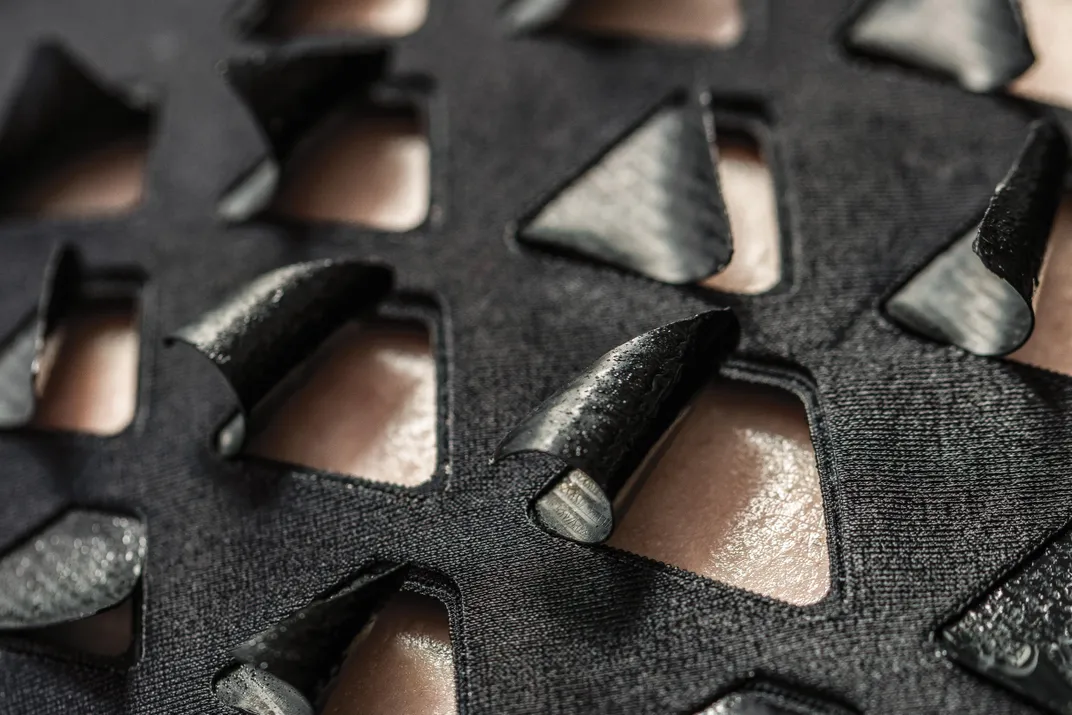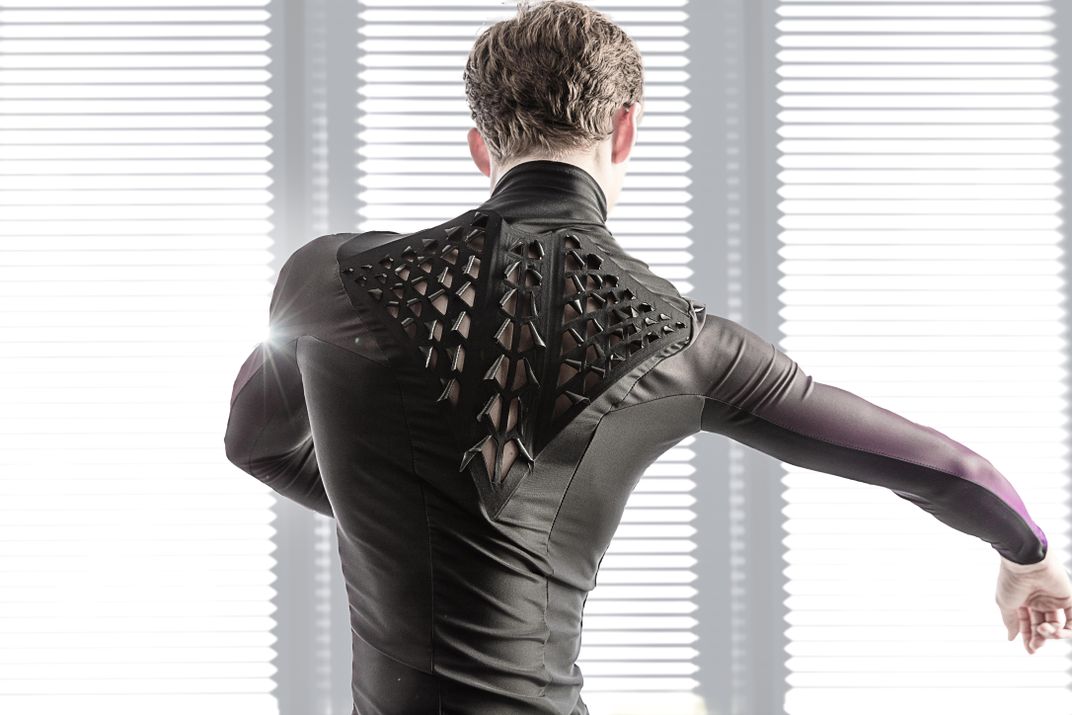The First Truly Breathable Fabric Contains Living Bacteria
Microbiology meshes with fashion to create a new kind of cool
There’s nothing new about clothing derived from biology—think leather, fur, wool, even silk. But a garment that’s actually alive? Not until now. MIT Media Lab researchers have incorporated living bacteria into a synthetic fabric, creating a material that responds to body moisture and hinting at a future of clothing that reacts to the person wearing it.
The key to the “Second Skin” fabric is the trillion or so single-cell organisms printed into every garment, which has dozens of tiny triangular flaps. The bacteria change shape quickly in response to moisture—“within seconds or even milliseconds,” says Lining Yao, a PhD student who leads bioLogic, the biohybrid materials project in the Tangible Media Group. When a person wearing the fabric heats up (and begins to sweat), the bacteria expand and the flaps open, releasing heat from the skin. Once the skin dries, the bacteria contract, closing the flaps and retaining body heat. The result: a fabric with its own miniature HVAC system.
The bacteria in question, Bacillus subtilis natto, are well known to foodies and Japanese history buffs. According to one legend, the micro-organisms were discovered a millennium ago by a samurai who, while fighting a battle, left his steamed soybeans in their straw wrapping. When he opened the container days later, he found that the beans had been fermented by the straw, becoming sticky and, to the Japanese palate at least, deliciously pungent. Natto has been a delicacy in Japan ever since.
Natto was an obvious choice for Yao’s team of chemical engineers, computer scientists and designers, who were looking for a bacteria that would react to moisture but was also safe to work with. “We did research in the Asian supermarket,” she jokes. The researchers think that the bacteria’s unusual ability to rapidly absorb and shed moisture stems from its porous, lattice-like structure and thin cell walls.
The garment’s starting point is a biohybrid film, produced by a printer that lays down lines of natto bacteria onto plastic or latex, which is then cut into flaps and sewn into the specialized cloth. The MIT researchers, whose work was supported by New Balance, collaborated with fashion designers at London’s Royal College of Art for the actual garment designs. (“None of us knows how to sew,” Yao says.) The team has created full-body prototype garments that bring to mind “Star Trek” uniforms, and is working with New Balance to develop them into something you might be able to wear to the gym in a few years.
The next step is to engineer a version that can withstand washing. Because nobody wants to smell like fermented soybeans.

